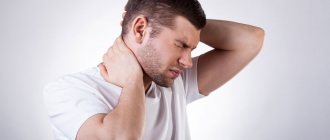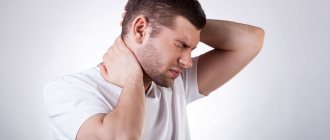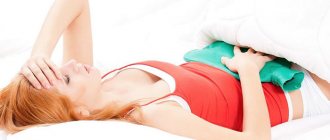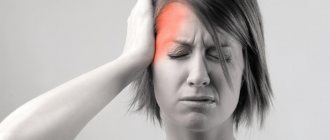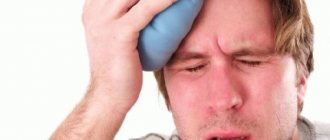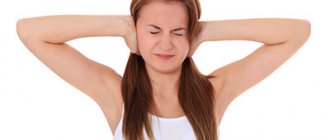12 April 2021
16868
0
2.5 out of 5
Neck pain is a very common problem. After all, according to medical statistics, more than 70% of people experience this periodically or regularly. Nevertheless, there are many reasons that can provoke pain of varying intensity in the neck. Most of them lie in diseases of the cervical spine. At the same time, the characteristics of pain, its localization, and the nature of other existing symptoms are important diagnostic signs that help to correctly determine what triggered them and prescribe treatment appropriate to the situation. It is very important to identify the disease causing pain in the neck as early as possible and take measures to eliminate it, since they can cause severe complications, including disability.
Why does this happen?
In order to understand this, it is necessary to study the anatomy of the spine in detail. Each cervical vertebra is surrounded by arteries, veins and capillaries. Changes in the shape of this section (curvature) create pressure on the walls of blood vessels, compression of the vessels occurs, and this entails an unexpected increase and change in pressure inside the skull (ICP). The combination of these factors causes loss of orientation and pain in the spine. What else causes neck pain and dizziness? The reasons may be:
- dysfunction of part of the spine caused by disruption of blood flow due to circular movements of the head;
- systemic vascular problems associated with chronic consumption of alcohol and drugs, as well as problems with removing substances from the body;
- cervical osteochondrosis (degenerative form or form of dystrophic disorder);
- decreased functionality of the brain and some vertebrae due to injuries;
- vegetative-vascular dystonia.
Increased sensitivity to the weather, redness and swelling of the eyes, nosebleeds - all this can also be a consequence of constriction of blood vessels and problems in the spine. In addition, myositis forms, which can progress to a permanent (chronic) stage.
The presented type of compression appears due to the deviation of some functions of the vertebral sections. If left untreated, it will become uniform, resulting in a decrease in the rate of oxygen reaching the brain. Such interruptions in brain function will manifest themselves in an apathetic mood, neck pain, dizziness, weakness, deterioration in rest patterns, and partial speech disorder. All this occurs due to a decrease in the functional abilities of the head brain.
Where does the pain come from?
Most often, changes in the three upper segments of the cervical spine are to blame for the appearance of cervicogenic headaches. The fact is that this area is innervated from the trigeminal nerve system, which also provides sensitivity to the tissues of the face, most of the soft tissues of the cranial vault, tissues and mucous membranes of the nose and mouth, teeth, as well as parts of the dura mater, therefore irritation of pain receptors in the area of the intervertebral joints, ligaments, muscles very often radiates to various areas of the head.
Article on the topic The neck turns its head. How to recognize osteochondrosis
How does the disease manifest itself?
Basically, patients with osteochondrosis experience similar symptoms. Also, strong physical stress, a sedentary lifestyle, hypothermia (or hypothermia) and injuries are responsible for the deterioration of sound and light-sensitive analyzers, changes in the perception of nerve receptors in the upper limbs, sweating, vomiting and lethargy.
Myogelosis, migraine, severe tension in the neck muscles, disruption of the nerve in the occipital part of the head and spondylosis are the causes of discomfort in the neck and dizziness.
Symptoms of myogelosis: pain in the back of the head, constrained movements of the shoulder girdle of the upper extremities, swelling of various kinds of muscles.
Symptoms of spondylosis: pain caused by physical activity or occurring spontaneously, the presence of tingling in the shoulder that radiates to the ears or eyes, and discomfort is likely to occur when turning the head.
Painful sensations similar to a migraine radiate to the area of the skull and temples. Impaired perception, visual assessment, and assessment of the perception of auditory information are also symptoms of this type of pathology. Overexertion caused by vigorous physical activity manifests itself as pain in the spine and skull. Such symptoms appear due to a sedentary lifestyle. The pathology can be described as gradually increasing pain on the side of the forehead or back of the head.
Don’t forget about neuralgia, sometimes this causes tingling in the neck and back of the head, stabbing pain that radiates to the back or ears when moving the head. In addition, cervical lumbago appears, sharply radiating to the head, which are also pathologies. Such pathologies manifest themselves when the receptor systems located in the spinal nerve are compressed.
Who to contact
Cervicogenic headaches are typically treated by chiropractors. It is these specialists who are able to relax the neck muscles and return the vertebrae that have shifted due to overstrain to their place. At the same time, a good doctor will work not only with the problem area, but also with the entire body: with the thoracic, lumbosacral spine, muscles in the interscapular area and shoulder girdle, with the feet. After all, even a subluxation of the ankle joint, suffered in youth, over time can cause muscle spasm and lead to headaches on the side of the head opposite to the damaged joint.
However, before contacting a chiropractor, you will have to visit a neurologist. The fact is that it is very difficult to independently determine what causes a headache, so you cannot do without consulting a specialist. If the examination reveals that your headaches are caused by problems in the cervical spine, your doctor will most likely advise you to see a chiropractor.
Diagnostic procedures
Diagnosis of neck pain is carried out by a qualified doctor. He questions the patient about his lifestyle. Next, examinations are carried out using tools such as:
- X-ray. Examination of the spine using x-rays, which are projected onto special paper (radiography);
- Tomography (computer). A method in which an area of the body is scanned and displayed on a specialized machine as a three-dimensional image;
- Tomography (magnetic resonance). Unlike computer imaging, magnetic resonance imaging creates an image of the source of pain in several projections using a strong magnet, and after projecting the image onto a computer, a final diagnosis is made.
Do not try to diagnose yourself; only a specially trained doctor can do this. In this case, the diagnosis will be quickly made, and the prescribed treatment will not be long in coming.
Pain in the neck
Warning: there are contraindications to massage of the cervical spine. Before following the recommendations, consult your doctor. In most cases, muscle pain in the cervical spine and associated headaches can be relieved or significantly reduced with a massage of the head, neck and cervical-collar area.
If desired, massage can be performed independently, without the help of a specialist. Self-massage uses only the strength of the arms (without the legs and body), which makes the effects less strong and sharply reduces the risk of injury. Massage movements should relax the muscles, so they are carried out smoothly and slowly. Provide a comfortable position for your head and neck. It is most convenient to carry out a massage when the head lies with the back of the head on a pillow or leans against the wall along with the back. At the same time, the muscles relax, which allows you to work with deeper layers of tissue. The sequence of massage movements is not a dogma. The author is guided by the great convenience of increasing strength and range of motion during a massage session. Therefore, you need to start with weaker and thinner muscles.
Introductory part of the massage: facial and masticatory muscles
Classic techniques: stroking and rubbing, can be omitted. Start with light kneading movements of the frontal area. The palmar surface of the terminal phalanges of the fingers, usually the index, middle and ring fingers, should fit tightly to the head. The thumbs are used for support - they form an axis around which rotation occurs. To imagine the tempo and amplitude, I recommend imitating the movements of your hand when brushing your teeth, but doing them twice as slow.
So you need to work the frontal areas from the inside out. Passes (3-7 in number) are performed lower and lower, slightly overlapping the previous one. Shifting the fingers in small “steps”: “step”-shift-“step”-shift...
Then, massage movements are performed on the temporal muscles - painful points are often found at the place of their attachment to the bones of the skull at the top. To get an idea of their size, place your hands on your temples and make chewing movements. The temporal masseter muscles are much larger than they appear. If there is a painful area at hand, you need to slow down and massage it for a longer time. Massage passages from front to back, top to bottom. When massaging the skin of the forehead and temple areas, try not to stretch it - this may provoke the appearance of wrinkles in the future.
Let's take our minds off the pain. Scalp massage
Next, you can pay a little attention to the scalp. There is no muscle underneath most of this area. In the middle, between the frontal and occipital belly of the supracranial muscle, there is a plate of fibrous tissue - the tendon helmet. However, the scalp is rich in nerve endings, and impacts on it have an impact on neighboring tissues. At the same time, the area of contact between the fingers and the skin should be minimal (fingers “between the hairs”), sliding is not allowed; to change the area being massaged, the fingers must be lifted and moved.
Kneading can be done intensively, simultaneously with all five fingers of each hand.
From head to neck. Massage the area where the neck muscles attach to the occipital region
The most critical area is the place of attachment of the muscles of the cervical spine and shoulder girdle to the occipital bone. This is where painful areas are most common.
Kneading of this zone is also carried out from the inside out, slowly and smoothly, searching for “problem” areas and influencing them. Despite the fact that near the border of the muscles there is a point of the vertebral artery, which bends and goes anteriorly into the cranial cavity through the foramen magnum, it is quite difficult to injure it during massage.
Slow stretching movements are very convenient, when the eminence of the thumb rests on the lateral surfaces of the neck and fingers II-V, connected together, move outward from the midline. The rate is about 1 cm/sec. If there is a painful compacted area under your fingers, pay attention to it - knead it slowly and persistently until it becomes indistinguishable from nearby tissues.
"Heavy artillery". Massage of the upper trapezius muscle
The same approach when massaging the neck muscles: - the upper portion of the trapezius muscle is the most superficial layer. The muscle itself is similar to a rhombus, the corners of which are located in the outer part of the scapula on both sides, at the top of the neck, along the nuchal line. The lower corner of the “diamond” is attached to the last thoracic vertebrae. The tendons of the muscle are connected to the spinous processes of the vertebrae throughout the cervical and thoracic regions. Tension of the upper trapezius muscle is often found in patients complaining of headaches, neck pain, as well as in people without complaints who remain in a static position for a long time (hairdressers, dentists, drivers, office workers).
For most people, it is possible to stretch the muscle separately along the entire length of the neck, as well as the shoulder girdle, by grasping it between the 1st and 2nd-4th fingers of the hand.
Slow deep movements of the II-IV fingers tightly pressed to the shoulder girdle from back to front are also effective. The range of movements may be minimal, even without displacement of the hands relative to the skin. Feel the massive trapezius muscle under your fingers and try to slowly stretch it. At the same time, you can slowly straighten your neck and throw your head back, spreading the lower corners of your shoulder blades and elbows to the sides.
The main source of troubles and its elimination. Massage of the splenius muscles and other long muscles of the neck
Typically, the main source of pain in the cervical spine is tension in the deep long muscles. First of all, the splenius capitis muscle. It starts from the spinous processes of the Th3-5 vertebrae and goes outward to the lateral part of the superior nuchal line and along the posterior edge of the mastoid process. Covered by the upper part of the trapezius muscle.
If the muscle is tense, it can be felt in the form of a cord running obliquely from bottom to top in the depths of the neck muscles.
You can more effectively stretch the muscle in a lying position, grasping it between fingers I and II on each side. In this case, the back of the head rests on the pillow, and the muscle, the main function of which is to hold the head straight, relaxes.
The muscle, due to compacted areas, may be heterogeneous to the touch. The movements should be slow, light and long to eliminate tension and pain.
The finishing touches. Massage of the short muscles of the neck.
After “dealing” with the splenius muscle, remain in a lying position and stretch the short muscles of the neck, which are located outside of the splenius muscle and under it. Even though they are located deep, be careful not to apply too much pressure. A massage technique is effective when smooth, rhythmic, amplitude movements of the elbow (“long lever arm”) are converted into short movements of the hand (“short lever arm”), and the area of the wrist joint acts as a fulcrum: gently press your fingers against the massaged area, and Move your elbow up and down like a dog scratching behind its ear, but unlike an animal, keep your fingers on your neck and move them slowly.
How to deal with such a disease
So, your neck hurts and you feel dizzy, what should you do? It is better to take this problem more seriously and, if such pathologies arise, immediately go to see a neurologist or therapist. Proper treatment of the spine (with relaxants and anti-inflammatory drugs) will have a beneficial effect on the body and eliminate factors that increase pain.
Doctors usually prescribe drugs such as paracetamol along with acetylsalicylic acid. Paracetamol does not cause irritation, but is harmful to the liver, and acetylsalicylic acid accelerates blood flow, but is harmful to the stomach; if you take them more than the amount recommended by your doctor, undesirable consequences may appear. Usually, pain between the shoulder blades is added to the symptoms of dizziness, in which case anti-inflammatory drugs are prescribed, but you should not take them too often, as this leads to the formation of ulcers, gastritis and internal bleeding.
In addition to medications, reflexology (massage or manual therapy) can also help. In this case, you should consult a doctor, he will give you advice on choosing a treatment method.
Different types of pain require an individual approach, for example, for dizziness, discomfort in the neck and vomiting, the following are best suited:
- acupuncture;
- pharmacopuncture;
- vacuum therapy.
If the pain has stopped, it is necessary to engage in physical activity and physical therapy (helps relieve pain in osteochondrosis), massage therapists and physiotherapists also help eliminate pain. In this way, the emergence of new pathologies can be avoided.
Discomfort can be eliminated by constant visits to a massage therapist and physiotherapist. Thanks to electrophoresis, you can improve blood flow to the muscles, and a warming massage will help you relax.
How to avoid it
Prevention is the best way to combat diseases, so doctors advise following a few simple rules:
- When bending your body, avoid sudden movements;
- Maintain correct posture;
- Do exercises to strengthen your back;
- Change your position every half hour (if your job requires you to sit in a chair all day);
- Avoid physical overexertion;
- Do not lift weights exceeding ten kilograms;
- If you lift weights (more than 10 kilograms), you must use a special corset to support your back;
- Do not create drafts indoors;
- Stick to proper nutrition;
- Temper the body.
A healthy lifestyle is the best prevention of all diseases. Don't sit at the computer for long periods of time, but if necessary, choose a chair with a special backrest. This is necessary for proper distribution of the load on the spine. Rest is an integral part of any healthy lifestyle. Sleep should last at least six to eight hours, you need to sleep on an orthopedic pillow and mattress specifically designed for proper sleep and manufactured by a certified seller
To prevent pain in the back of the head, do not eat large quantities of fatty, smoked and salty foods. Your diet should include vitamins and special supplements. It is also mandatory to undergo annual examinations with a general practitioner or a qualified specialist. This is the best option if you have neck pain and dizziness.
Important!
Contact your doctor immediately if:
- An acute headache occurred suddenly.
- If the pain is accompanied by dizziness and unsteadiness of gait.
- If, in addition to pain, you have a fever and a rash.
- If you have a headache during pregnancy.
It will cure headaches and correct posture. Myths and truths about physical therapy Read more
